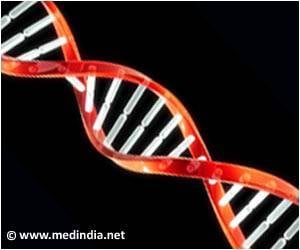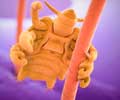
The research also sequenced the genome of a microbe that lives inside the body louse.
The tiny, blood-sucking body louse Pediculus humanus humanus L. seems to appear out of nowhere during economic downturns, wars and other crises that cause people to live in unsanitary conditions.
It is closely related to the head louse, Pediculus humanus capitis, which also feeds on human blood. But the body louse lives in clothing and, unlike the head louse, can spread bacterial diseases.
The body louse genome is the smallest known genome of any insect, according to University of Illinois entomology professor Barry Pittendrigh, who led the drive to fund the project and coordinated the international team of scientists who analysed the sequence.
The size of the body louse genome probably reflects its rather protected habitat and predictable diet, he pointed out.
Advertisement
"So most of the genes that are responsible for sensing or responding to the environment are very much reduced."
Advertisement
University of Illinois entomology professor Hugh Robertson was responsible for sorting out the genes contributing to chemical sensing, and discovered that the louse has significantly fewer taste and odorant receptors than other insects.
The body louse also has "the smallest number of detoxification enzymes observed in any insect," the researchers wrote in a report appearing in the Proceedings of the National Academy of Sciences.
John Clark, of the University of Massachusetts at Amherst, and Si Hyeock Lee, of Seoul National University, led this part of the analysis.
The body louse's pared-down list of detoxifying enzymes makes it an attractive organism for the study of resistance to insecticides or other types of chemical defense, Pittendrigh said.
University of Illinois entomology professor and department head May Berenbaum and former graduate student Reed Johnson contributed to this effort.
The body louse is completely dependent on humans for its survival; it will die if separated from its host for very long. It is just as reliant on a microbe that lives inside it: the bacterium Candidatus Riesia pediculicola.
In the Riesia genome, the team found genes for the production of an essential nutrient, pantothenate (Vitamin B5), which the louse requires and cannot make on its own.
The Riesia genome also is quite small in comparison to its closest "free-living" relatives. So too are the genomes of the bacterial pathogens that the body louse transmits to its human hosts: Rickettsia prowazekii (which causes epidemic typhus), Borrelia recurrentis (the agent of relapsing fever) and Bartonella quintana (which causes trench fever).
This, the researchers report, will make the body louse a useful tool for understanding the co-evolution of disease-carrying parasites and their bacterial co-conspirators.
The body louse genome will aid a host of other lines of research, Pittendrigh said.
He said: "Lice have been used to understand human evolution and migration. They've been used to estimate when we started wearing clothing.
"The genome should also help us develop better methods of controlling both head and body lice."
Berenbaum said: "Beyond its importance in the context of human health, the body louse genome is of considerable importance to understanding insect evolution.
"It is only the second genome sequenced to date of an insect with gradual development - that is, that does not undergo profound anatomical and ecological change as it matures from egg to adult. Although most of the insect species on the planet undergo complete metamorphosis - developing from egg to caterpillar to pupa to adult - in fact gradual metamorphosis is the older developmental program. The body louse genome can provide a baseline for understanding how complete metamorphosis, a key to insect domination of the planet, came to evolve."
Source-ANI










